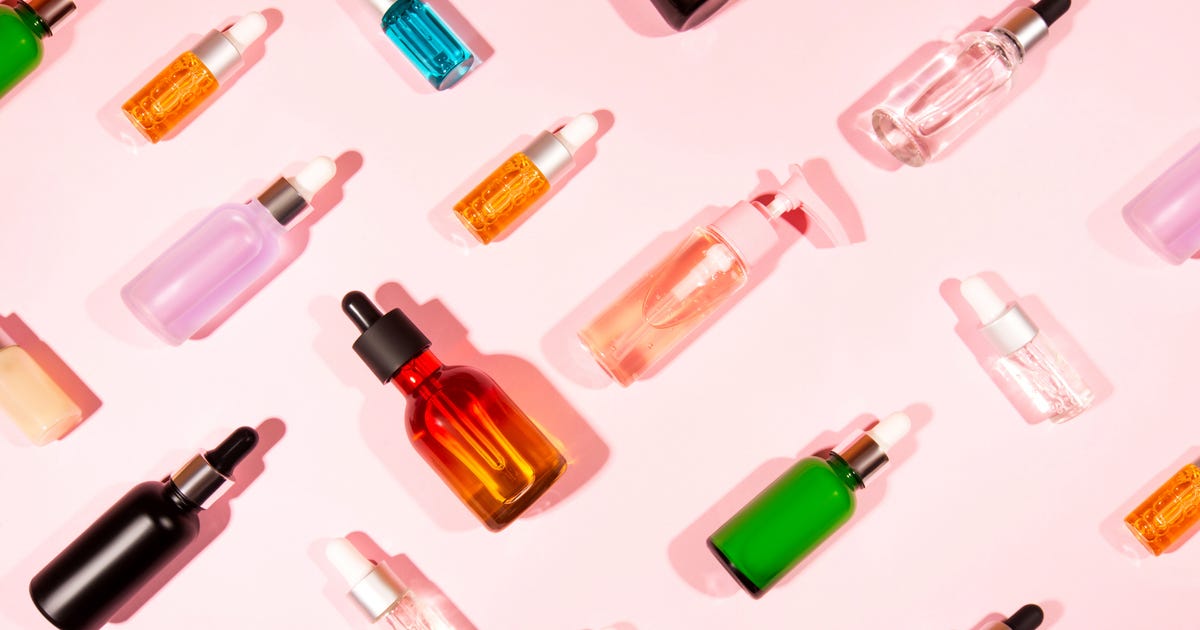Here’s a list of things you absolutely don’t need, according to a recent series on TikToks: a Stanley Cup, a Charlotte Tilbury contour wand, ON running shoes, new seasonal decor, a bubble headband to hold your hair away from your face while you’re doing your makeup, or whatever’s on anyone’s Amazon storefront.
Whether or not you own any of these specific items, chances are that at some point you have purchased or considered purchasing something cool, interesting, or aesthetically pleasing based on someone’s recommendation. you’ve seen on social media. This is how influencer marketing is designed to work.
But over the past month, a growing wave of creators on TikTok are urging people to resist the lure of influencer marketing and reevaluate their spending amid a trend dubbed “disinfluence,” which has spawned a hashtag which at the time of writing has nearly 180 million views.
In the current economic climate, many people are drastically reevaluating their spending in response to layoffs and rising prices. This has coincided with a debate over the authenticity of influencer marketing, which forces people to re-evaluate whether the products they purchased due to influencer recommendations are as good as they hoped. Disinfluence is basically an attempt to break free from the cycle of overconsumption that influencers encourage their followers to participate in.
Some saw it coming. In a TikTok video last month, fashion forecaster and trend analyst Mandy Lee highlighted how last year she predicted an impending shift from the glamorization of overconsumption to “thoughtful criticism, education, authentic style and creativity”. Lee said that, for her, disinfluence is “about making conversation easier.”
“If I can help sell an idea, a theory, a behavior that will help someone to be a more aware buyer or to better understand fashion, to have the tools to arm themselves with knowledge, that’s for me what it means to disinfluence,” she says.
From anti-haul YouTubers to TikTok disinfluencers
“I’m here to uninfluence you,” is perhaps the most common phrase that appears in TikTok uninfluence videos. This usually precedes the creator telling the viewer about a product they purchased due to rave reviews from an influencer, but fell far short of their expectations.
For the TikTok community, the disinfluence trend might be the first time it encounters online movements that resist overconsumption, but the culture of influencers is already here. Between 2015 and 2017, a number of “anti-transportation” videos began to appear on YouTube. These were designed to reject the ever-popular “haul” videos, where fashion influencers flaunt the spoils of their shopping sprees and fuel fast fashion culture.
Many who create disinfluence content on TikTok say something like they’ve been waiting for this to happen or they’re so glad people are finally talking about it. But to portray disinfluence as an entirely new trend is to ignore years of effort by influencers and activists – many of whom are black, Indigenous or other people of color – who have long pointed out the pitfalls of overconsumption. .
It doesn’t help, said Aja Barber, a sustainable fashion influencer and author of the book Consumed, that influencer spaces and the fashion industry tend to cater to the needs of whiteness, thinness and of the youth. “When the message comes from a messenger that doesn’t fit in the neat little box that the industry prefers, a lot of times it’s like ‘don’t listen,’” she said in an interview with CNET. last week.
Barber has mixed feelings about disinfluence as a TikTok trend, but ultimately, she’s happy that discussions about overconsumption are entering the mainstream. She is adamant, however, that disinfluence must be paired with an anti-consumer message.
“I’m not saying never buy anything again,” she said. “But the amount we bought is criminal, and the way it harmed the Earth and its people is criminal, and the way it ultimately makes us feel is kinda shitty.”
How to make friends and uninfluence people
As a new and loosely defined term, the disinfluence hashtag produces a mix of videos that criticize overconsumption and videos that dispel a product’s hype and point viewers to a better alternative. As many have pointed out, both on and off the platform, it’s not exactly in the spirit of the trend. The “don’t buy this, buy that” mentality is not so much a disinfluence as a re-influence.
As you skim through this content, it’s clear that many of those jumping on the bandwagon make no connection between resisting the latest must-have product with sustainability and our culture of buying excessive stuff. Overall, they seem largely driven by the same factors that drive existing influencers – viral fame and the money that comes with it. They are in many ways another product of the influencer industry and the economic climate, both of which are driving more people to turn to content creation as another potential source of income.
The tendency to disinfluence brings accusations in all directions. Influencers who are constantly promoting a slew of new products, especially people who embrace the life-changing properties of products before ever featuring them in videos again, are the most obvious target. But others blame influencer followers for not being smarter, more aware consumers.
Fewer and fewer people recognize the larger forces at play. Influencers and consumers both operate in a profit-driven ecosystem where powerful tech companies and brands with advertising dollars are also actively trying to encourage people to part with their money. A trend forcing people to take a break from spending while they have a group chat about how to break free from their shopping addiction is unlikely to make it to most brands’ favorite list for the year.
Platforms such as TikTok and Instagram are not designed to create movements around ideas and causes, especially to resist overconsumption. They are designed to prioritize the individual over the collective, and have consumerism and consumption at their very core. This is why attempts to establish solidarity or have nuanced conversations on these platforms tend to fail, while those who sell things – whether products, or just a signature look or an idealized lifestyle – tend to thrive.
Some influencers, like Barber, resist feeding platform mechanics by refusing to function as recommendation engines and finding ways to monetize their following in other less algorithmic spaces, such as Patreon or Substack. Not feeding the algorithm by refusing to shout about brands, using Instagram as advertising space and tagging everything she wears allowed Barber to “hold a space of integrity,” she said. .
“I’m becoming the type of creator where I can choose how I want to be supported, I don’t feel beholden to brands,” she said. “Everyone knows I don’t get paid to share brands [so] people know that when I share something on my social media, they can believe it’s real.”
No longer under the influence
As social media users, we don’t have much control over the mechanics of Big Tech-owned platforms and the industries built around those platforms. Our spending and our value systems, however, are quite another matter.
What the disinfluence trend offers is space for people to pause and reflect on their relationships with the influencer industry, how they spend, and the things they already own.
In Consumed, Barber makes the connection between consumerism, colonialism and the climate crisis, laying bare the evils of the problematic fast-fashion industry. But she also encourages people who already have fast fashion in their wardrobe to use these items rather than send them to landfill. “You have to wear it and give it a good life,” she said. “You took it.”
With the disinfluence trend seen as a solution to the cost of living crisis, I wonder if Barber fears the movement is a fleeting reaction to a temporary economic situation rather than an opportunity for people to educate themselves. and engage in a more sustainable lifestyle.
“A lot of people are definitely not changing for the right reasons,” she said. “But I think sometimes moves like this can still be a gateway to change. And once people start to understand why the system is so bad, I find we become quite evangelical about it. .”
It’s important to remember, she added, that trends are the product of people acting individually. “The consumer shapes the conversation,” she said. Together, consumers can bring about a cultural shift that completely changes the landscape.
Tech
Don’t miss interesting posts on Famousbio










